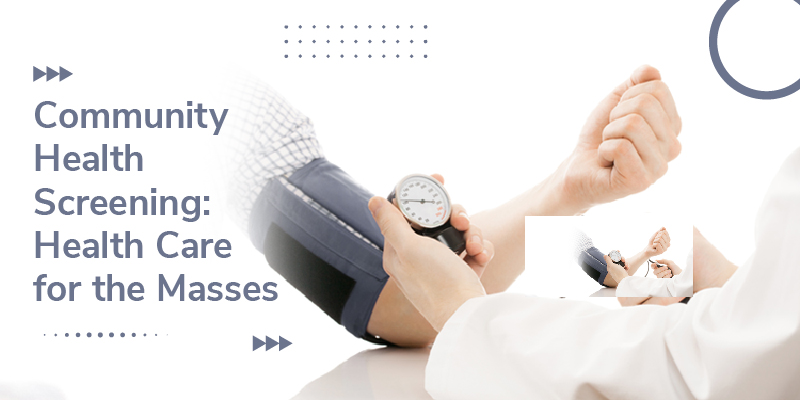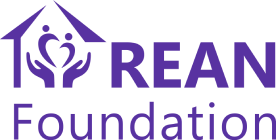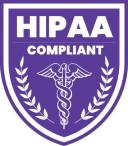
Community Health Screening: Health Care for the Masses
Healthcare is quickly becoming an area that the majority of masses need to be educated about. Over several years, a category of diseases called "Non-communicable diseases" has gradually taken hold of the general population and has now become the leading cause of global mortality. Despite its widespread nature, the majority of the population in Low-and-middle-income countries (LMICs) and High-income countries remain unaware of the prevalence of these life-threatening diseases. Patients must be aware of early diagnosis options through medical screening and testing to manage these conditions, arrest disease progression and reduce mortality.
Let's discuss community health in a little more detail and the newest AI tech apps on smartphones that offer better options for health screening and diagnosis.
The Importance of Community Health
Community health is an expansive term dealing with the health and well-being of members of a large group living together as a community or those with similar health features, race, economic conditions, ethnicity, or other factors.
Several members of such communities may struggle with severe medical conditions or have extreme requirements but lack access to proper care because of socio-economic conditions or other factors they cannot control. For example, a woman undergoing pregnancy complications like toxaemia may find that medical help is too far to reach if she lives fifty miles away. Similar to her situation is an older man or woman with diabetes who cannot access medical care since they can not drive themselves or have access to friends or relatives who could take them to a clinic. Community health care facilities and resources become invaluable in such circumstances.
Community Health Screening: Contributions for Community Wellbeing
Community health screening is a valuable resource for the early detection of illness. Several diseases can be efficiently managed if treatment and lifestyle changes are started early on. For instance, a Pap smear allows early detection of cancer in the cervix; early detection of high blood pressure could help prevent heart disease. In both these cases, early detection and management of the illness can ultimately save lives.
More significantly, early screening for detecting abnormalities in the foetus or dangerous conditions like life-threatening deformities can help the medical practitioner plan treatment for complications at the time of birth and reduce child mortality rate. This is a significant development since almost 6% of all Indian children are born with abnormalities. Also, 10% of our children are affected by developmental delays that may threaten their lives. These figures point to the importance of community health screening. It helps manage and treat these medical conditions more effectively by providing early signs and symptoms of affected development.
Early detection of common cancers that affect women in India through early screening on a population-characteristics basis
Several programs provide community-based assessment and screening facilities for women of socio-economically under-privileged backgrounds. This gives them the advantage of early detection and treatment. Cancers of the mouth, breasts, or uterus have been detected in this manner.
How does it work?
Healthcare providers set up temporary clinics within the chosen communities. Throughout the process, clusters of people are chosen, and household surveys are conducted. Following this, women receive healthcare education and access to screening facilities based on their eligibility. Many types of cancer, including uterine, cervical, oral, and breast, can be detected early on and treated using this method.
Results of community screening
It was found that 21,015 people had been involved in this project, and 4009 women were found eligible for the screening process. Screening compliance rates for the cervix, breast and oral cavity were 70, 85, and 88%, respectively, with screen positivity figures of 14.9, 3.9, and 3.9%. The number of cases detected was very encouraging, pointing to how necessary a community-based assessment or screening could be. Twenty-seven women were found to have pre-cancer cells in the mouth, and twenty-five were found at the pre-cancer stage in the cervix. One case of invasive breast cancer was detected, and one was detected with cervical cancer. Two other patients were found to have cancer of the cervix, while there was one case of oral cancer. It is interesting to note that all the patients adhered to the treatment regimen.
Services for Promotion of Health and Prevention of Disease
There are many parallels in services and functions that target the promotion of good health and the prevention of disease. But for the sake of conceptual clarity, disease prevention is usually considered a function of the health care sector. In contrast, the promotion of good health seems to be a function that is assigned on a cross-sectoral level and may be assigned social factors that determine the health of a community. The following sections discuss these in a little more detail.
Read Also: Beat the Health Risks of Extreme Heat and Stay Cool
Steps to Promote Health
Here are a few strategies that could be implemented to promote health.
- Interventions from a nutritional and dietary standpoint should tackle all sorts of nutritional challenges, including the lack of any or several nutrients, resulting in malnutrition, excessive intake, and even incorrect intake of nutrients in the diet.
- Steps that address the promotion of reproductive and sexual health include the promotion of education for reproductive and sexual health and safety, access to health facilities that promote sexual and reproductive health, and family planning education and related services.
- Effective policies to curb domestic violence through educational campaigns, protection and rehabilitation of victims of such violence and effective access to law enforcement officials and social-service agencies.
- Public service intervention programs and policies to curb the abuse of substances like tobacco and alcohol and encourage physical activity and proper diet among the masses. NCD-best buys, DPAS, FCTC, and alcohol are good examples.
- Substance abuse and mental health interventional programs and policies.
Several health-promotion and disease-prevention support mechanisms can be implemented, including:
- Disease prevention and health promotion partnerships on multi-sectoral levels
- Social communication and educational activities that are aimed at improving lifestyles, behaviours, environments and conditions for better health and living.
- Complete reorientation of health-provider services so that they are equipped to provide proper care models that encourage adopting practices that promote health and prevent illness.
- Communication models that encourage conveying of risk factors.
Using Smartphones to Improve Health Screening
Effective diagnostic tools are important for proper health screening. In many communities, the lack of access to such tools is a key barrier to diagnostic screening. The development of smartphone-based AI tools has become a viable solution in this scenario. Using data collected from these tools, experts can gather data and diagnose several medical conditions to prescribe treatment and care.
The Takeaway
The main objective of public health initiatives is to identify people, groups and locations with dire healthcare needs to be met. Barriers to proper healthcare and disease-prevention resources are addressed through their programs and policies. Community screening services play a major role in raising awareness among different populations, including the urban poor, about important health issues like:
- the prevalence of common cancers
- dangers of tobacco abuse
- the importance of proper sanitation and hygiene
- the dangers of poor nutrition and the lack of healthy food resources
- HIV/AIDS treatment
- the prevalence of potentially dangerous non-communicable and infectious diseases, and
- the lack of basic healthcare and medical support.
At REAN foundation, we are passionate about the health of the masses. In collaboration with charitable organizations and NGOs, REAN is working to bring long-lasting change in the lives of underprivileged communities, the poor, and the marginalized with limited access to proper health care. We are continuously working towards utilizing government schemes and resources for mobilizing entitlement support for marginalized communities and the urban poor.
Healthcare is quickly becoming an area that the majority of masses need to be educated about. Over several years, a category of diseases called "Non-communicable diseases" has gradually taken hold of the general population and has now become the leading cause of global mortality. Despite its widespread nature, the majority of the population in Low-and-middle-income countries (LMICs) and High-income countries remain unaware of the prevalence of these life-threatening diseases. Patients must be aware of early diagnosis options through medical screening and testing to manage these conditions, arrest disease progression and reduce mortality.
Let's discuss community health in a little more detail and the newest AI tech apps on smartphones that offer better options for health screening and diagnosis.
The Importance of Community Health
Community health is an expansive term dealing with the health and well-being of members of a large group living together as a community or those with similar health features, race, economic conditions, ethnicity, or other factors.
Several members of such communities may struggle with severe medical conditions or have extreme requirements but lack access to proper care because of socio-economic conditions or other factors they cannot control. For example, a woman undergoing pregnancy complications like toxaemia may find that medical help is too far to reach if she lives fifty miles away. Similar to her situation is an older man or woman with diabetes who cannot access medical care since they can not drive themselves or have access to friends or relatives who could take them to a clinic. Community health care facilities and resources become invaluable in such circumstances.
Community Health Screening: Contributions for Community Wellbeing
Community health screening is a valuable resource for the early detection of illness. Several diseases can be efficiently managed if treatment and lifestyle changes are started early on. For instance, a Pap smear allows early detection of cancer in the cervix; early detection of high blood pressure could help prevent heart disease. In both these cases, early detection and management of the illness can ultimately save lives.
More significantly, early screening for detecting abnormalities in the foetus or dangerous conditions like life-threatening deformities can help the medical practitioner plan treatment for complications at the time of birth and reduce child mortality rate. This is a significant development since almost 6% of all Indian children are born with abnormalities. Also, 10% of our children are affected by developmental delays that may threaten their lives. These figures point to the importance of community health screening. It helps manage and treat these medical conditions more effectively by providing early signs and symptoms of affected development.
Early detection of common cancers that affect women in India through early screening on a population-characteristics basis
Several programs provide community-based assessment and screening facilities for women of socio-economically under-privileged backgrounds. This gives them the advantage of early detection and treatment. Cancers of the mouth, breasts, or uterus have been detected in this manner.
How does it work?
Healthcare providers set up temporary clinics within the chosen communities. Throughout the process, clusters of people are chosen, and household surveys are conducted. Following this, women receive healthcare education and access to screening facilities based on their eligibility. Many types of cancer, including uterine, cervical, oral, and breast, can be detected early on and treated using this method.
Results of community screening
It was found that 21,015 people had been involved in this project, and 4009 women were found eligible for the screening process. Screening compliance rates for the cervix, breast and oral cavity were 70, 85, and 88%, respectively, with screen positivity figures of 14.9, 3.9, and 3.9%. The number of cases detected was very encouraging, pointing to how necessary a community-based assessment or screening could be. Twenty-seven women were found to have pre-cancer cells in the mouth, and twenty-five were found at the pre-cancer stage in the cervix. One case of invasive breast cancer was detected, and one was detected with cervical cancer. Two other patients were found to have cancer of the cervix, while there was one case of oral cancer. It is interesting to note that all the patients adhered to the treatment regimen.
Services for Promotion of Health and Prevention of Disease
There are many parallels in services and functions that target the promotion of good health and the prevention of disease. But for the sake of conceptual clarity, disease prevention is usually considered a function of the health care sector. In contrast, the promotion of good health seems to be a function that is assigned on a cross-sectoral level and may be assigned social factors that determine the health of a community. The following sections discuss these in a little more detail.
Read Also: Beat the Health Risks of Extreme Heat and Stay Cool
Steps to Promote Health
Here are a few strategies that could be implemented to promote health.
- Interventions from a nutritional and dietary standpoint should tackle all sorts of nutritional challenges, including the lack of any or several nutrients, resulting in malnutrition, excessive intake, and even incorrect intake of nutrients in the diet.
- Steps that address the promotion of reproductive and sexual health include the promotion of education for reproductive and sexual health and safety, access to health facilities that promote sexual and reproductive health, and family planning education and related services.
- Effective policies to curb domestic violence through educational campaigns, protection and rehabilitation of victims of such violence and effective access to law enforcement officials and social-service agencies.
- Public service intervention programs and policies to curb the abuse of substances like tobacco and alcohol and encourage physical activity and proper diet among the masses. NCD-best buys, DPAS, FCTC, and alcohol are good examples.
- Substance abuse and mental health interventional programs and policies.
Several health-promotion and disease-prevention support mechanisms can be implemented, including:
- Disease prevention and health promotion partnerships on multi-sectoral levels
- Social communication and educational activities that are aimed at improving lifestyles, behaviours, environments and conditions for better health and living.
- Complete reorientation of health-provider services so that they are equipped to provide proper care models that encourage adopting practices that promote health and prevent illness.
- Communication models that encourage conveying of risk factors.
Using Smartphones to Improve Health Screening
Effective diagnostic tools are important for proper health screening. In many communities, the lack of access to such tools is a key barrier to diagnostic screening. The development of smartphone-based AI tools has become a viable solution in this scenario. Using data collected from these tools, experts can gather data and diagnose several medical conditions to prescribe treatment and care.
The Takeaway
The main objective of public health initiatives is to identify people, groups and locations with dire healthcare needs to be met. Barriers to proper healthcare and disease-prevention resources are addressed through their programs and policies. Community screening services play a major role in raising awareness among different populations, including the urban poor, about important health issues like:
- the prevalence of common cancers
- dangers of tobacco abuse
- the importance of proper sanitation and hygiene
- the dangers of poor nutrition and the lack of healthy food resources
- HIV/AIDS treatment
- the prevalence of potentially dangerous non-communicable and infectious diseases, and
- the lack of basic healthcare and medical support.
At REAN foundation, we are passionate about the health of the masses. In collaboration with charitable organizations and NGOs, REAN is working to bring long-lasting change in the lives of underprivileged communities, the poor, and the marginalized with limited access to proper health care. We are continuously working towards utilizing government schemes and resources for mobilizing entitlement support for marginalized communities and the urban poor.



